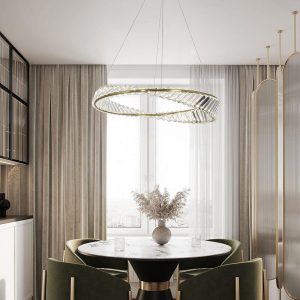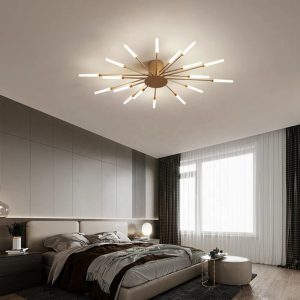
Introduction
When it comes to innovative design and use of colour, Verner Panton (1926-1998) stands out as a legend in the field of modern interior design. His innovative use of synthetic materials, bright colours, and bold geometric shapes created a unique and iconic style that still resonates today. In this article, we will explore the fascinating world of Verner Panton’s designs, and how they continue to inspire designers and homeowners alike.
The Beginnings of Verner Panton’s Career
Born in Gamtofte, Denmark in 1926, Verner Panton studied architecture at the Royal Danish Academy of Fine Arts in Copenhagen, but quickly shifted his focus to furniture and interior design. In the early 1950s, he worked for the legendary Danish furniture designer Arne Jacobsen, where he learned the importance of function and form in design. Panton’s early works were characterized by clean lines and functionalism, but he soon began to experiment with bolder designs and colours.
The Iconic Panton Chair
Panton’s most famous design is undoubtedly the Panton Chair, which he developed in the 1960s. Made from a single piece of moulded plastic, the Panton Chair’s shape is inspired by the human body and can be displayed in a variety of bright and bold colours. It became an instant classic and has rightfully earned its place as a symbol of mid-century modern design.
The Visiona 2 Exhibition
In 1970, Panton was invited to design the interior of the Visiona 2 exhibition in Cologne, Germany. His psychedelic and immersive design featured a kaleidoscope of colours, textures and patterns, creating a surreal and otherworldly environment. The exhibition cemented Panton’s reputation as a visionary and brought his work to a global audience.
The Heart Cone Chair
Another iconic design by Verner Panton is the Heart Cone Chair (1959). Its unique shape, with a heart-shaped back and cone-shaped seat, is both playful and functional. It was created during Panton’s early years as a designer, when he was still exploring new materials and forms.
The Living Tower
The Living Tower (1969) is a unique piece of furniture that combines seating, storage and shelving. Made from fibreglass, the tower is shaped like an amoeba and features a range of different-sized openings for users to sit, stand or store their belongings. It was designed for the Visiona 2 exhibition and embodies Panton’s futuristic and innovative approach to furniture design.
The Legacy of Verner Panton
Verner Panton’s influence can still be felt in contemporary interior design. His innovative use of synthetic materials, bright colours, and bold shapes has inspired a new generation of designers to experiment with new forms and textures. His designs continue to be celebrated in museums and exhibitions around the world, and his legacy is a reminder of the importance of boldness and imagination in design.
Verner Panton was a designer who pushed the boundaries of conventional furniture design. His bold use of colour, form and materials created a unique and iconic style that still resonates today. From the Panton Chair to the Living Tower, his designs are still loved and celebrated around the world. Verner Panton was a visionary who has left his mark on the world of contemporary design, and his legacy will continue to inspire designers and homeowners for years to come.







